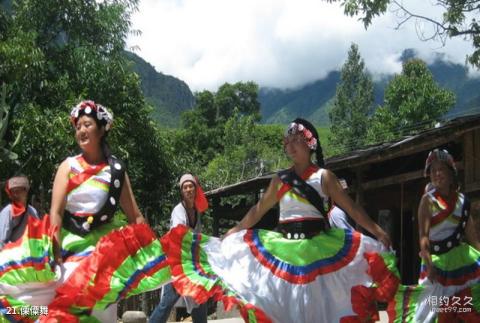
Introduction to Lisu Dance: The Lisu people are good at singing and dancing, which varies from region to region. The folk dances in the Nujiang River Basin only dance but do not sing. They are entirely based on recorders (similar to the Qiang flute), transverse flutes, pipa, erxian, Northwest folk musical instruments and the homemade plucked instrument "dabia" accompanies the dance. The name of the dance is usually named after the dance steps, and more often depends on the name of the music. During every festival, after sowing and harvesting, people dance a self-entertaining "production dance" called "Miyiguake". This dance is said to have originated in the 17th century, when the Lisu people were still living by hunting and gathering wild fruits, so the dance could only be based on simulating various animals. During the long-term production practice, the Lisu people learned to farm, and gradually improved the primitive dance that simulated animals into the "production dance" that expresses farming. In the circle dance, people use various simulated gestures to meticulously express people digging the ground, planting corn, weeding, and returning the harvest to the warehouse. And there is still a "monkey beating dance" that simulates animals in the dance, which adds fun to the dance. This dance does not have any accompaniment or singing, and is completely based on the sound of the dancers dancing with all their feet on the ground, forming a unique style.
